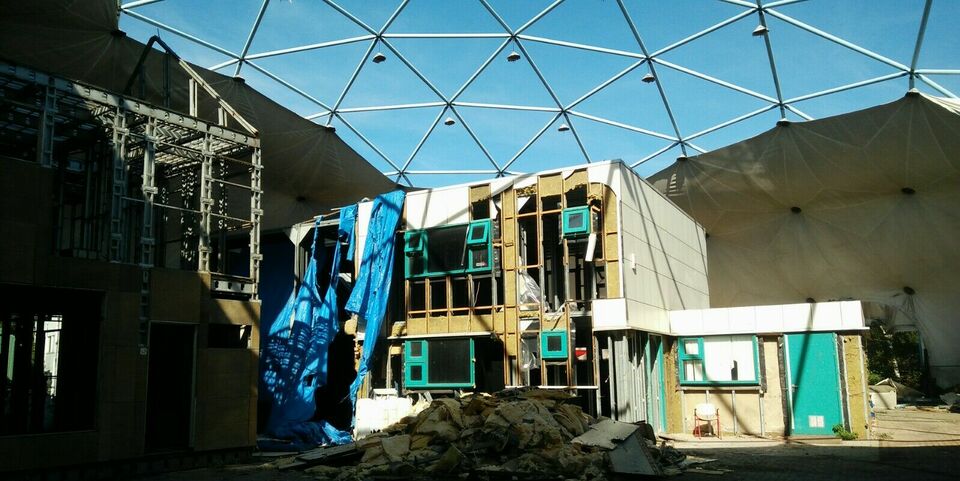Koepel dismantled due to tattered cover
De koepel, a relatively unknown building on the east side of the campus, towards the Insulindelaan, was removed in the summer of 2021. This had not been planned but multiple reasons made it unavoidable. The cover over the Koepel was in tatters and is costly to repair, and chromium-6 was discovered.
All the options for the Koepel building were on the table, says Dorine Peters, Director of Real Estate. “The roof cover had been in tatters for some time and our first step was to find out what the repair bill was likely to be. Very costly, we discovered. This presented a dilemma: are we going to carry out repairs now, fully knowing that this site is earmarked for a different future in the Campus 2040 plan; in five to ten years' time it might become a research lab.”
“In conjunction with the Department of the Built Environment it was finally decided to either move or demolish the Koepel. One factor under consideration was the building's (cultural) historical value,” Peters knows. When the choice fell to removal, RE was keen to ensure the process was circular. In addition, the Department of the Built Environment had to be allocated new premises since the Koepel housed two large research setups still needed for research purposes. “Not that the site was still functioning; the tattered roof cover was allowing in rain. New premises to house these facilities will be built on the site.”
Chromium-6
“The wish to find a circular solution prompted the search for a party who could put the Koepel to good use. After all, this was a building that can be dismantled and rebuilt. During the asbestos and chromium-6 inspection, routinely conducted when buildings are remodeled, chromium-6 was discovered.” That threw a spanner in the works and meant that unfortunately the Koepel could not be reused elsewhere. Chromium-6 is a form of chromium metal. It has a rust-resistant effect that used to make it a popular addition to paint. These days it is a banned substance as far as consumer products are concerned, but it is still used industrially.
“The chromium-6 was present in the coating on the building. So extremely cautious handling was required. As a university we saw it as our responsibility to remove the building in a safe manner. Chromium-6 is akin to asbestos in terms of safety: in principle, if you leave it alone, it's harmless. If we had tried to relocate the Koepel, we'd have had to loosen the bolts and drill the odd hole, and even that would present risks. Unfortunately, it has meant having to abandon our wish to apply circular principles, but safety is paramount.”
Demolition specialists Van Liempd removed the Koepel, the same company that dismantled the Paviljoen in a circular way. Peters cannot yet say when we can expect a new building on the site of the Koepel, or what type of building is planned.



Discussion